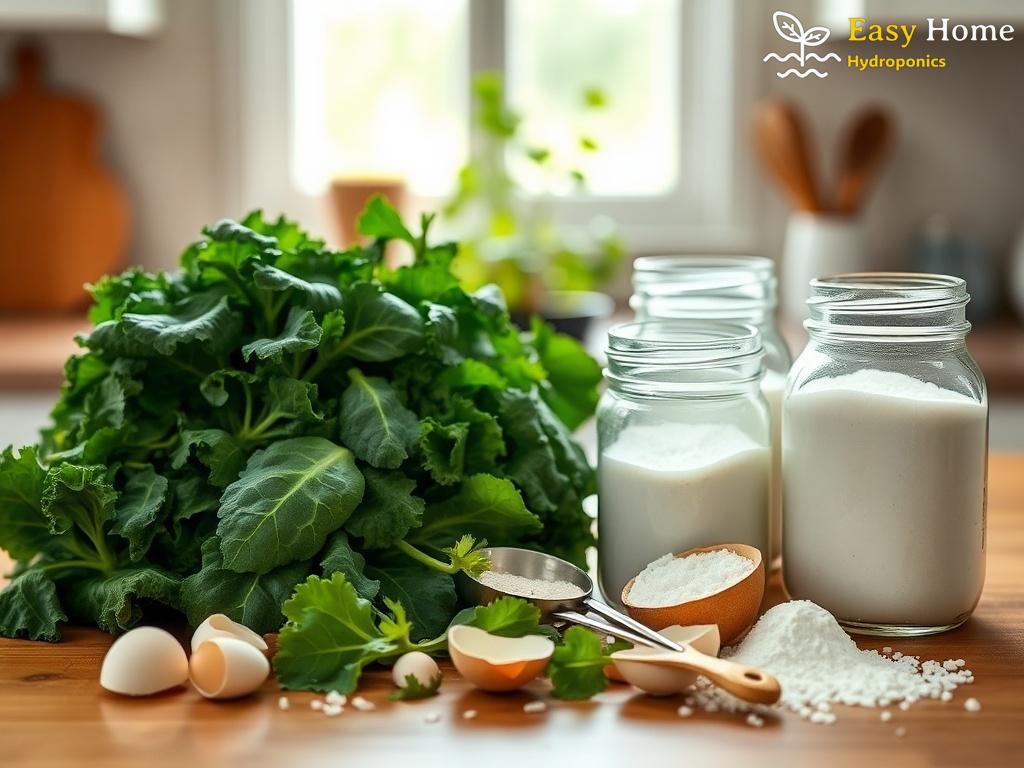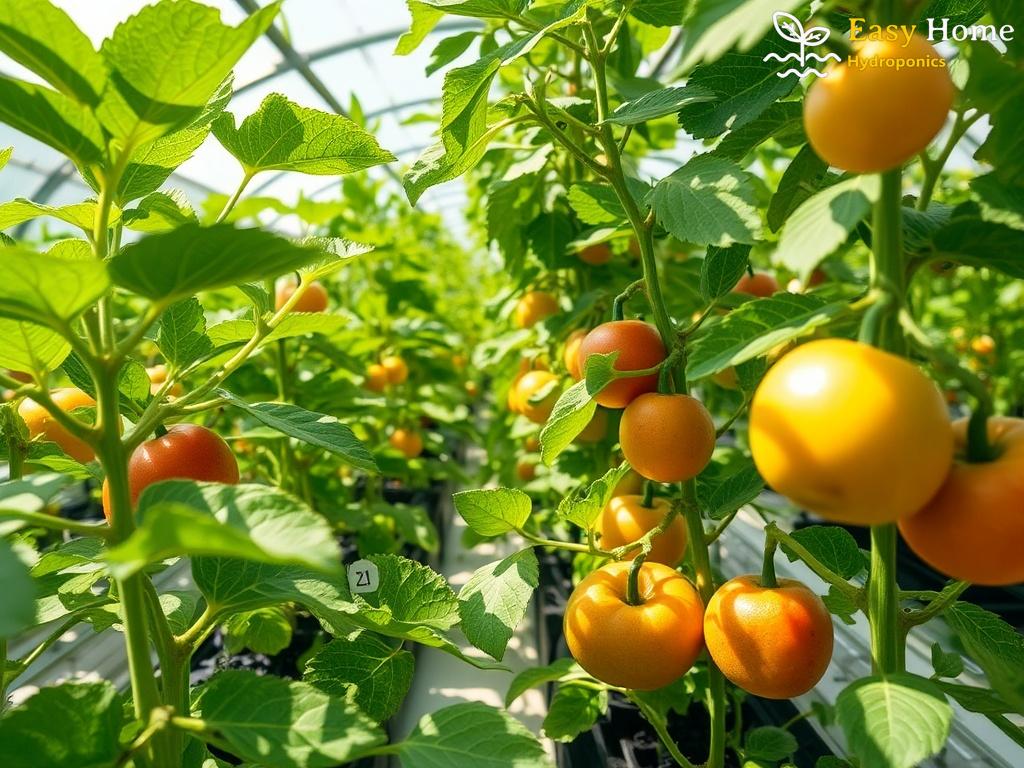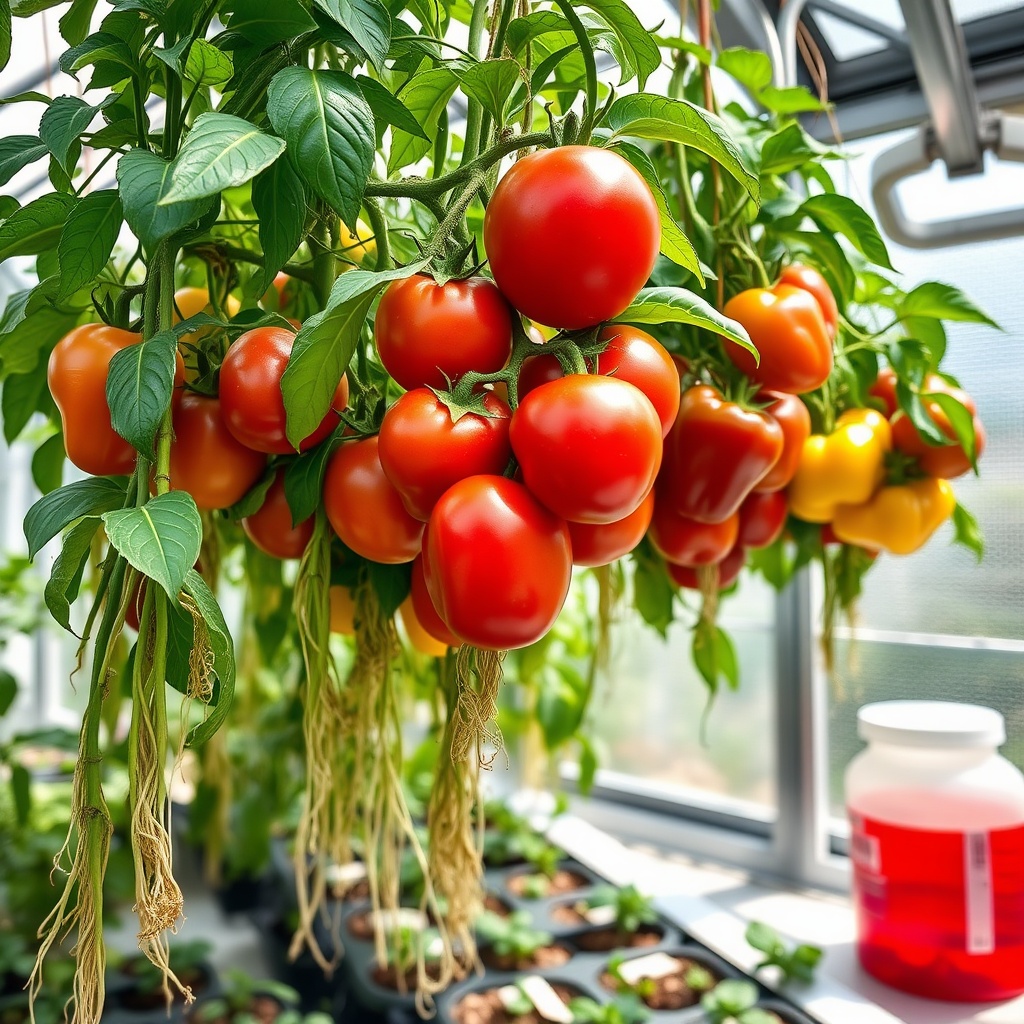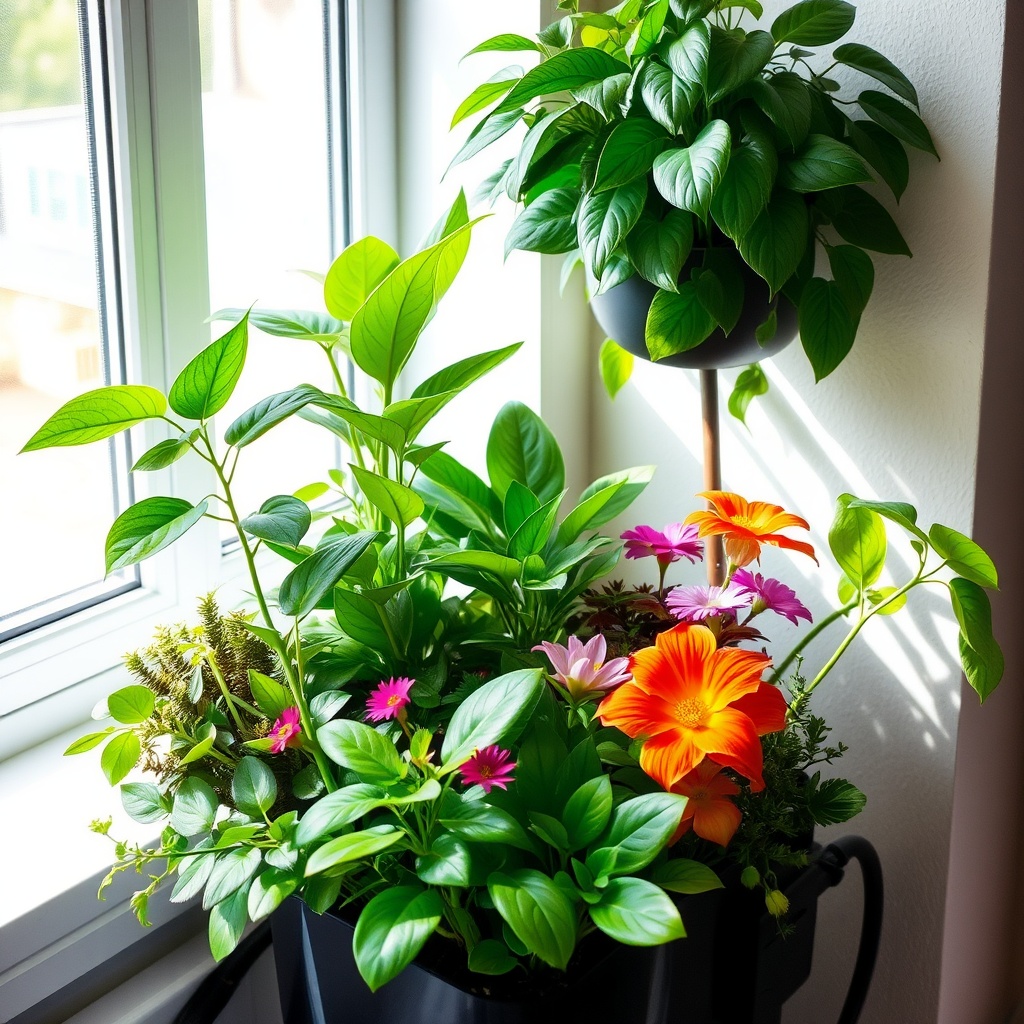Crafting Your Own Calcium Boosters
Calcium plays a pivotal role in the growth and development of plants, especially in a hydroponic environment where nutrients are delivered directly to the roots. Without adequate calcium, plants can suffer from issues such as blossom end rot in tomatoes and tip burn in lettuce. Thus, crafting your own calcium boosters not only enriches your nutrient solution but also enhances the overall health of your plants.
Creating your own calcium supplements can be both economical and rewarding. Here are some natural sources you can consider:
- Eggshells: A popular choice, eggshells are rich in calcium carbonate. After thoroughly cleaning and crushing them, they can be added directly to your hydroponic system.
- Crushed Coral: This source is abundant in calcium and can be easily sourced from aquarium supplies. It also works as a slow-release option.
- Lime: Both agricultural lime and dolomitic lime can provide a quick calcium boost. However, be cautious with quantities as it can alter pH levels.
Once you’ve selected your calcium source, it’s time to mix your own supplement. Here’s a simple guide to crafting a calcium-rich solution:
| Ingredient | Quantity | Instructions |
|---|---|---|
| Crushed Eggshells | 1 cup | Boil for 10 minutes to sanitize, then crush into a fine powder. |
| Water | 1 liter | Use distilled or rainwater for best results. |
| Optional: Epsom Salt | 1 tablespoon | Add for magnesium boost if desired. |
Combine the crushed eggshells with water in a container and let it steep for 24 hours. Strain the mixture before adding it to your hydroponic system. This homemade calcium supplement can be an effective way to ensure your plants receive the nutrients they need.
Magnesium Magic: Homemade Solutions
While calcium is often the star player in hydroponics, magnesium deserves its own spotlight. This essential mineral plays a crucial role in photosynthesis, enzyme function, and overall plant health. Without sufficient magnesium, plants can exhibit yellowing leaves and stunted growth, which can be particularly detrimental in a hydroponic setup. Crafting your own magnesium supplements can be a game-changer in your nutrient regimen.
Creating magnesium boosters at home allows you to provide your plants with the nutrients they need in a cost-effective way. Here are some natural sources of magnesium that can help elevate your hydroponic garden:
- Epsom Salt: A well-known option, Epsom salt is comprised of magnesium sulfate and can be easily dissolved in water for quick absorption.
- Green Leafy Vegetables: The remains of cooking or juicing leafy greens like spinach or kale can be repurposed to extract magnesium.
- Seaweed Extract: This organic option not only offers magnesium but also a plethora of other micronutrients beneficial for plant health.
Once you identify your preferred magnesium source, it’s time to whip up a homemade solution. Here’s a straightforward method to create an effective magnesium booster:
Ingredients:
- 1 tablespoon of Epsom salt
- 1 liter of distilled or rainwater
- Optional: 1 teaspoon of liquid seaweed extract for enhanced nutrient content
Instructions:
- Begin by dissolving the Epsom salt in the water. Ensure it is completely dissolved to prevent clogging in your hydroponic system.
- If using, add the liquid seaweed extract and stir gently.
- Let the mixture sit for about an hour to allow the nutrients to blend fully.
- Introduce the solution into your hydroponic system, monitoring your plants for positive changes.
By mixing up your own magnesium supplements, you not only save on costs but also gain control over what your plants are consuming. This hands-on approach fosters a deeper connection with your hydroponic garden, ensuring that every leaf thrives with vitality.
Essential Nutrients: Why They Matter
In the vibrant realm of hydroponics, the success of your plants hinges on a careful balance of nutrients. Among these, calcium and magnesium stand out as essential players, each contributing uniquely to plant vitality. Understanding their significance not only enhances your gardening prowess but also ensures your plants flourish with vigor and resilience. Let’s delve into why these nutrients are indispensable and how they interact within the hydroponic ecosystem.
Calcium is often regarded as the building block of plant structure. It plays a crucial role in strengthening cell walls, ensuring that plants maintain their integrity and resilience against physical stressors. In hydroponics, where nutrients are delivered directly to the roots, calcium acts as a messenger, facilitating the movement of other essential nutrients and mitigating the risk of deficiencies. Plants lacking sufficient calcium can exhibit symptoms such as blossom end rot and tip burn, which not only affect their health but can also lead to significant yield loss.
While calcium often takes the spotlight, magnesium serves as the unsung hero of plant nutrition. This vital element is integral to the process of photosynthesis, as it forms the central atom in chlorophyll, the pigment responsible for capturing sunlight. Without adequate magnesium, plants may struggle to convert light energy into the chemical energy necessary for growth, leading to yellowing leaves and overall stunted development. Additionally, magnesium aids in enzyme activation, influencing various biochemical reactions that are essential for plant metabolism.
| Nutrient | Key Functions | Deficiency Symptoms |
|---|---|---|
| Calcium | Strengthens cell walls, aids nutrient transport | Blossom end rot, tip burn |
| Magnesium | Essential for photosynthesis, enzyme activation | Yellowing leaves, poor fruit development |
By recognizing the profound impact of calcium and magnesium on plant health, hydroponic gardeners can tailor their nutrient solutions for optimal growth. The beauty of crafting homemade supplements lies in the ability to respond proactively to the specific needs of your plants, ultimately fostering a thriving hydroponic garden where each plant reaches its full potential.
DIY Recipes for Hydroponic Success
Creating your own calcium and magnesium supplements can be a game changer in achieving hydroponic success. Not only does this approach save on costs, but it also allows you to tailor your nutrient solutions to meet the specific needs of your plants. Here, we present a selection of easy-to-follow recipes that will enhance your hydroponic garden, ensuring your plants receive the vital nutrients they crave.
Before diving into the recipes, it’s important to understand the significance of calcium in your hydroponic system. This essential nutrient fortifies cell walls, boosting plant resilience and supporting nutrient transport. Let’s explore how to create an effective calcium supplement from readily available sources.
Using crushed eggshells is a popular and effective way to provide calcium to your plants. Here’s a step-by-step guide:
Ingredients:
- 1 cup of crushed eggshells
- 1 liter of distilled or rainwater
- Optional: 1 tablespoon of vinegar (to enhance calcium extraction)
- Instructions:
- Clean and thoroughly dry the eggshells before crushing them into a fine powder.
- If using vinegar, mix it with the water in a separate container.
- Add the crushed eggshells to the water (with or without vinegar) and let it steep for 24 hours.
- After steeping, strain the solution and introduce it into your hydroponic system.
Just as calcium is vital, magnesium plays an equally important role in photosynthesis and overall plant health. A homemade magnesium supplement can easily be prepared from Epsom salt, which is widely available and affordable.
Below is a straightforward recipe for crafting a magnesium booster:
Ingredients:
- 1 tablespoon of Epsom salt
- 1 liter of distilled or rainwater
- Optional: 1 teaspoon of liquid seaweed extract for added nutrients
- Instructions:
- Dissolve the Epsom salt completely in the water to ensure even nutrient distribution.
- If desired, stir in the liquid seaweed extract for additional micronutrients.
- Let the mixture sit for about 30 minutes before using.
- Introduce the solution to your hydroponic system and watch your plants thrive!
Using homemade calcium and magnesium supplements not only enriches your nutrient mixes but also enhances your connection to your hydroponic garden. By actively participating in the nutrient preparation process, you’ll gain a deeper understanding of your plants’ requirements and how to address them effectively.
By incorporating these DIY recipes into your hydroponic routine, you’re setting the stage for a flourishing garden, where every plant is nurtured to its fullest potential. With the right nutrients at hand, your hydroponic garden will become a vibrant tapestry of health and productivity.
Balancing Act: Calcium and Magnesium Ratios
In the intricate world of hydroponics, achieving a harmonious balance between calcium and magnesium is akin to conducting a symphony. Both elements hold vital roles in plant growth, but their relationship is delicate and requires careful attention. Striking the right balance ensures that your plants thrive, avoiding deficiencies and maximizing nutrient uptake. Understanding how to manage the ratios of these two essential nutrients can dramatically influence the health and productivity of your hydroponic garden.
Calcium, often viewed as the structural backbone of plant life, collaborates closely with magnesium, the energy facilitator. Their relationship is more than just coexistence; they often compete for uptake at the root level. When calcium levels are too high, they can inhibit magnesium absorption, leading to symptoms such as yellowing leaves and poor fruit development. Conversely, excessive magnesium can prevent calcium from being utilized effectively, causing similar distress in plant health. This dynamic interplay underscores the necessity of monitoring and adjusting their ratios to maintain a thriving hydroponic ecosystem.
When it comes to crafting your homemade supplements, knowledge of the ideal calcium to magnesium ratio is crucial. Generally, a ratio of 3:1 or 4:1 (calcium to magnesium) is recommended for most plants, ensuring that neither nutrient overshadows the other. However, factors such as plant type, growth stage, and specific environmental conditions can influence these ratios. For instance, leafy greens may require slightly different proportions compared to fruiting plants. Regularly testing your nutrient solution can allow you to fine-tune these ratios, enhancing nutrient absorption and overall plant health.
Moreover, it’s essential to remember that both calcium and magnesium contribute to various physiological functions within the plant. While calcium strengthens cell walls and aids in nutrient transport, magnesium is pivotal for chlorophyll production and photosynthesis. As such, maintaining their balance is not merely a matter of numbers; it’s about ensuring that your plants receive the necessary support for vigorous growth and sustainability.
In conclusion, effectively managing the ratios of calcium and magnesium in your hydroponic system is a crucial aspect of nurturing healthy plants. By understanding their roles and interactions, you can create a nutrient solution that not only meets the needs of your plants but also promotes a flourishing garden environment.




